Do Native Americans celebrate Thanksgiving?
For the majority of non-native Americans, Thanksgiving is a time to think about things you are grateful for, eat far too much turkey, stuffing, and pumpkin pie, and relax in front of the TV to catch a football game. The stories of the history of Thanksgiving come from early days in school. They include tales of pilgrims and Indians sitting down together for a friendly feast.
Unfortunately, these stories are based more in fantasy than any true sense of what really happened all those years ago.
Once people begin to realize how this country truly came to be, who were the first people on its shores, and what happened surrounding the circumstances of the idea of Thanksgiving, the more likely they are to reject the idea completely.
For Native Americans, the decision to celebrate the traditional European-style Thanksgiving is down to both personal preference and more serious contemplation of what really happened all those years ago.
Learning about history is an important part of knowing how to act today. From the time you were in kindergarten, you undoubtedly heard many tales about the Pilgrims landing on Plymouth Rock in Plymouth, Massachusetts, and building a civilization from the supposed wilderness of the New World. These childhood stories may still shape your understanding.
For many Native Americans, they are a sign of the continuing disrespect and dismissal of their contribution and place in what is now the United States of America.
Do Native Americans Celebrate Thanksgiving?
Of course, the entire population of Native American people in the modern world do not do the same thing and make the same decisions.
There are undoubtedly many who enjoy a roast turkey, green bean casserole and viewing a football game in the afternoon on that Thursday in November. However, those more interested in their culture and the true history of our country understand that these modern trappings of the holiday do not touch on what really happened and what their ancestors went through back in the 16th and 17th centuries.
Some consider any celebration of the modern form of Thanksgiving to be firmly rooted in disrespect and ultimately a bad thing to do. The attitudes expressed by many are understandable once historical truth is revealed. If an American Indian child is forced in school to glue together a construction paper headdress and learn that the European pilgrims welcomed them to their feast in the spirit of friendship and brotherhood, it is just another example of the perceived whitewashing of history.
Dennis Zotigh examined the question for the Smithsonian. He found opinions varied across families.
From Smithsonian.com
Crow Agency, Montana: My Dad used to say, “We give thanks everyday, so if they want to give us a holiday to give thanks, I'll take it.
Alberta, Canada: It is an opportunity for those who do take note. . . . There will be those who roll their eyes, and others who may gain deeper appreciation, to honor (maybe even emulate) a more giving nature, . . . that of their Creator.
California: When I went to school there was two Indians in our class me and a Hopi girl neither one of us had to endure any of this because her mother and my mother both raised hell with the principal no fake headbands or feathers for us.
What Is the Truth About the First Thanksgiving?
While the history of the Native American people who lived in the Plymouth, Massachusetts, region where the Pilgrims built their towns would comprise much more space than one simple website page, it is important to understand some of the facts in order to appreciate why many indigenous people do not acknowledge Thanksgiving Day the same way as non-natives.
The Pilgrims, who were English people who came across the water in order to find the freedom to practice their own religion, landed on the shores of North America and promptly claimed the region for themselves. The Native American tribe that already lived there is called the Wampanoags.
Most childhood stories you learn in school paint the Pilgrims as the kind benefactors who prepared a big feast and invited the poor Indians to share it with them. In truth, the Wampanoags came to the aid of the Pilgrim colony who they believed were under attack because they were shooting off their guns recreationally. The resultant feast was provided jointly by the Europeans harvest and the hunting skills of the Native peoples.
Yes, at that time the two communities were relatively friendly to each other.
Related Info – A More Accurate Thanksgiving
The original feast would not have included many of the foods that we traditionally associate with Thanksgiving today. The primary meat would have been venison from the white-tailed deer that the Wampanoag group hunted because the Pilgrims did not have enough food to feed the entire party.
Other options would have included turkey, duck, goose, chicken, fish, lobster, shellfish, corn, beans, pumpkins, carrots, cabbages, berries, nuts, milk and cheese, and even maple syrup and popcorn.
However, the truth about this first Thanksgiving must not ignore the fact that these initial overtures of peace and friendship were made a mockery of by the European settlers who ended up both violently and surreptitiously eradicating huge percentages of the Native American populations both there and across the entire country in the years to come.
From a population of nearly 100,000 in the years directly proceeding the Pilgrim's arrival, disease, and other factors reduced the Wampanoag population to less than 30,000. When people hear about the black plague, they think of the horrific amount of death in England and other parts of Europe, the same thing happened in the Americas to an even greater degree.
Some were also enslaved during these dark years. This practice and the wholesale massacre of native populations continued from this point throughout the history of the country.
The Early Years of The Thanksgiving Holiday
Before it was a federally recognized day held on the last Thursday of every November, people across the eastern seaboard did hold Thanksgiving celebrations here and there. George Washington declared November 26 to be the official Thanksgiving Day while leading the fight for the nation's independence. However, it was not until 1863 and the presidency of Abraham Lincoln that the day was declared a national holiday for all to celebrate.
At this point, it was merely a day to practice gratitude and recognize all the things the country had to be thankful for. It did not include the idea of pilgrims or a celebratory feast until decades later.
Interestingly enough, it is the initial purpose of this day of Thanksgiving that would make so much more sense as a cause for celebration in this modern era. Native peoples and those with European ancestors alike should be able to agree that expressing gratitude for the bounties and benefits in their lives makes sense. This concept is far removed from what the holiday turned into, however.
Today, many Native people see Thanksgiving as a slap in the face to their culture and ancestral experience, as well as things like prejudice that they still have to put up with today. The inaccuracies still taught in school and spoken of by adults all across the country go against not only the truth but also many of the important cultural factors that the Wampanoag and other first nations people believed in and valued.
For example, a grammar school headdress with construction paper feathers has nothing to do with what the tribal people wore who were involved in those early relationships with the Pilgrims. In fact, feathers were considered very important symbolic accessories that were absolutely not part of an everyday outfit.
How Do Native Americans Celebrate Thanksgiving?
As mentioned above, many Native people do watch football and eat a turkey with their family on this day in November. The modern cultural aspects of the holiday have infiltrated all groups of people whether they had anything to do with the first Thanksgiving or not. However, many of them look at the story as one small example of how their culture was damaged and disregarded from the early days until now.
While modern schools seem to focus on the Pilgrims as the source of Thanksgiving, Native Americans would be more likely to look at both sides of the story. Happily, this is changing to some degree as the modern world begins to understand that the old stories are not helpful and teach children the wrong ideas about all the people involved. A push against prejudice is always beneficial.
Some have adopted the celebration of Thanksgiving as a time to express gratitude to their Native ancestors and the contributions that Native Americans made in the early years of their existence. Others focus on family and friends and simply come together to enjoy the good things in life.
These feasts or gatherings are more likely to include native foods, storytelling, games, and other specific cultural factors that are honestly more applicable to the true story of those early days when the white settlers and indigenous people interacted with each other.
Thanksgiving As a National Day of Mourning
Those are the positive ways of celebrating that seek to make the best of what was truly a horrific situation and outcome for both the Wampanoag and all of the other Native American tribes that lived on the land would become the United States. Anyone who has ever looked into the true history of this country understands how horribly the native populations were treated as a whole.
Millions were killed, forced off their ancestral lands, abused with forced assimilation, and treated with the utmost disrespect and racism. Even today, there is a strong undercurrent of prejudice against native populations who struggle to maintain their individual cultures, languages, and truths.
In 1970, an organizing group of various Native American people in the New England area declared the traditional Thanksgiving Thursday as a National Day of Mourning. West Coast natives deemed this day “Unthanksgiving Day.”
These are not national holidays or recognized by most people outside of the Native American community. They are protests against the horrific treatment of tribal people by the European settlers. They all serve as reminders of the atrocities and horrific actions that destroyed cultures, murdered millions of people, and still affect these groups until this day.
Three hundred and fifty years after the Pilgrims came to what they considered the new world, a Wampanoag leader named Frank James or, more appropriately by his Native American name Wamsutta, attempted to present a speech in Massachusetts at a Thanksgiving celebration. Frank James' initial invitation to do so was revoked when the event planners found out that he intended to tell the truth of all the negative aspects of the first Thanksgiving story and years surrounding it.
He would not be thwarted from his desire to set the record straight. He took his speech and the people accompanying him to a location on Cole's Hill nearby commonly thought to be where the Pilgrims first landed and gave his speech about how the white man sold Wampanoag slaves, stole food, opened graves, and practiced other atrocities against the Native Americans in those early days.
Ever since that momentous occasion, the National Day of Mourning is marked by a gathering at that spot. The goals primarily include the spread of accurate knowledge so that people understand what really went on all those years ago. The United American Indians of New England organization want recognition for their people and what they went through and a stop to profiteering off of the false story that paints the Pilgrims in such a positive light.
Today, people come from all around to attend the events on the National Day of Mourning. A small metal plaque is permanently affixed to a stone on that spot to commemorate the original speech and what Thanksgiving truly means to indigenous people.
What Does Thanksgiving Mean to Native Americans?
A well-known video posted online from Cut.com showcases a group of diverse Native Americans who reveal their thoughts and feelings when they hear the word Thanksgiving. Some echo sentiments that infiltrate all cultural groups that celebrate the holiday today, gratitude, family, food, and football. Others speak with a more serious attitude and reveal thoughts of dishonesty, sadness, slaughter, and terrorism, that come with the real history of the Thanksgiving story.
These diverse attitudes demonstrate the unique understanding of what Thanksgiving is today from a Native American perspective. The assimilation into white culture many years ago has undoubtedly convinced many native children of the falsified story of happy Pilgrims and Indians coming together to share feast and fun.
The original purpose of Thanksgiving day, which was simply to express gratitude for the benefits and bounties given to all, remains the focus for many people. On the surface, everyone can agree that giving thanks for good things is a fine way to spend the holiday.
It is the negative and more truthful reactions that speak to the heart of the problem with Thanksgiving for many Native Americans. Anyone who understands anything about the history of the United States knows how horrifically they were treated. This began the moment explorers stepped foot on the shore for the first time and still continues through today.
Many simply do not understand why the people of America should celebrate the start of such a violent and racist period in history. It would be very similar to celebrating the first slave ship landed on the African shores or transported the cargo of doomed people to the southern United States. Understanding that pilgrims and other white settlers slaughtered so many of the native people makes it very hard to understand why anyone would want to celebrate such a day.
Besides the horrors that occurred against the Wampanoag and all other tribes throughout history in the form of massacres, murders, and enslavement, Native American groups and cultures were eradicated in a highly purposeful manner through cultural assimilation. The early people were forced to adopt European ways, rounded up and sent to schools and churches in an effort to erase their own beliefs and practices, and punished or killed if they resisted.
Today, every glued-together headdress or supposedly authentic Native American craft school children are encouraged to make is just another symbol of the misunderstanding or purposeful falsifying of historical truth.
Related – Thanksgiving Activities For Children
The complexities of the Thanksgiving holiday in America stretch back through history to the earliest days when it had nothing to do with Pilgrims or Native Americans at all. When George Washington suggested that people practice gratitude, it was not for the reasons that it morphed into rather quickly. History is full of whitewashing and falsification of the real stories at the start of many events and undertakings. Giving is an excellent representation of this truth.
Today, while schoolchildren don their paper hats and learn fantasy tales of pilgrims and Native Americans sitting down peacefully together, and the majority of adults focus on how long to cook their turkey and who will win the big football game, Native Americans and others who seek truth remember the undercurrent of destruction and hatred that the circumstances truly include.
Native Americans celebrate Thanksgiving in many different ways. Some have accepted the modern attitudes toward the holiday or keep it as a National Day of Mourning started by Wamsutta decades ago. It's possible to look at it from both points of view in the ever-present push and pull between historical accuracy and the importance of their rich and diverse cultures, and the everyday assimilation into the modern world mostly governed by people whose ancestors first landed on the shores and brought such destruction with them.
Last Updated on October 3, 2023 by Paul G
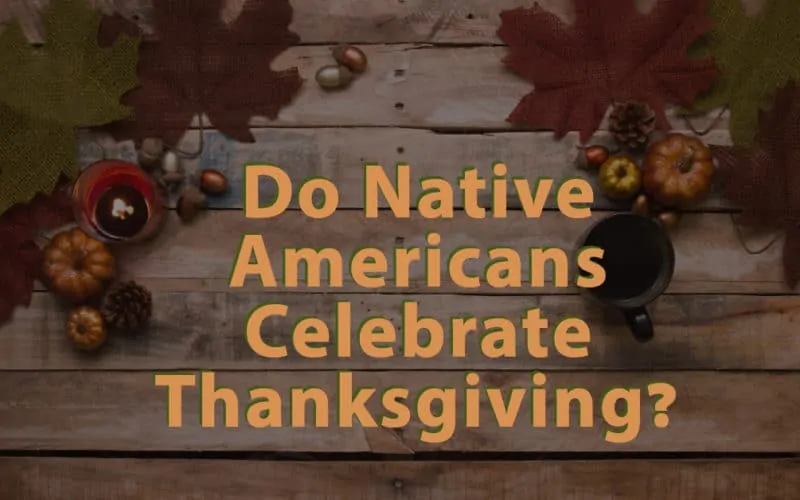
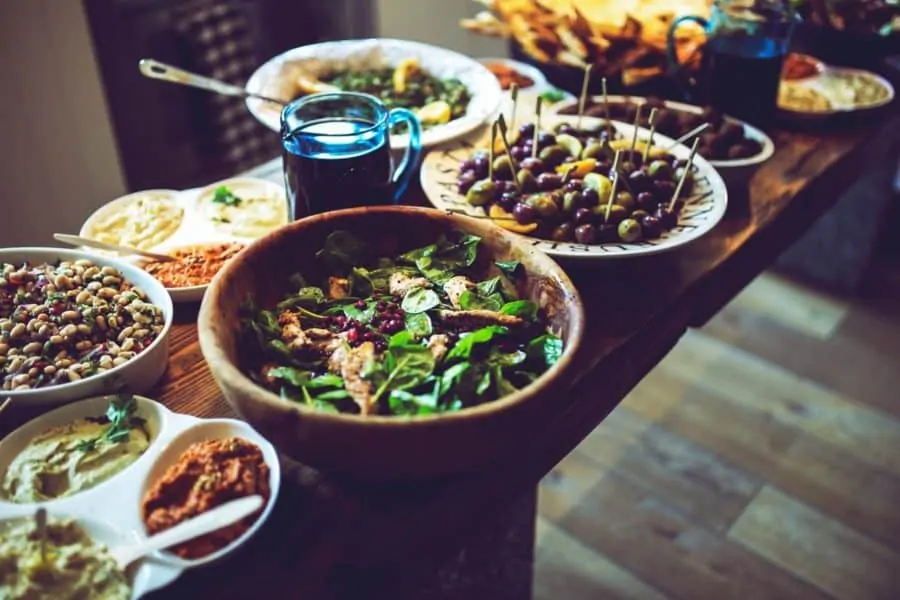
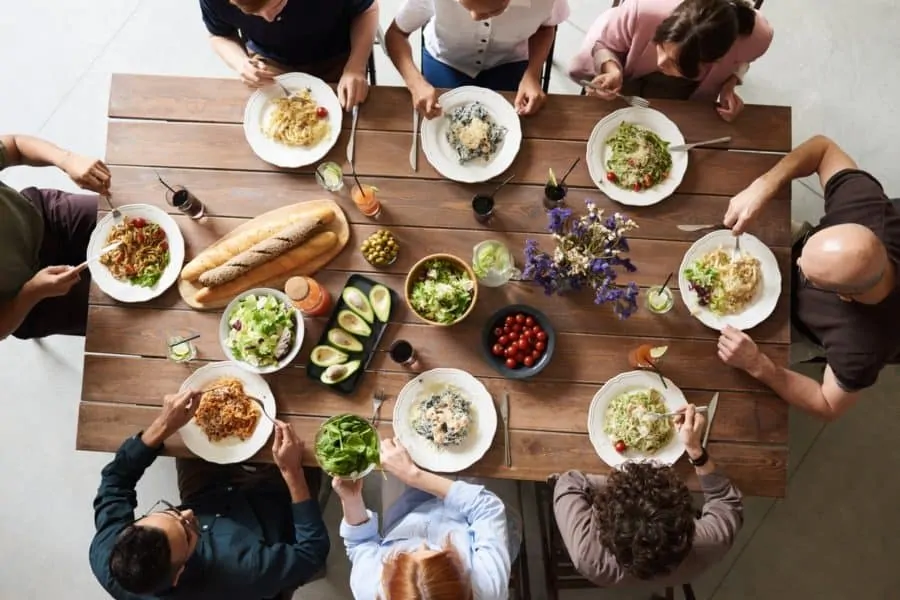
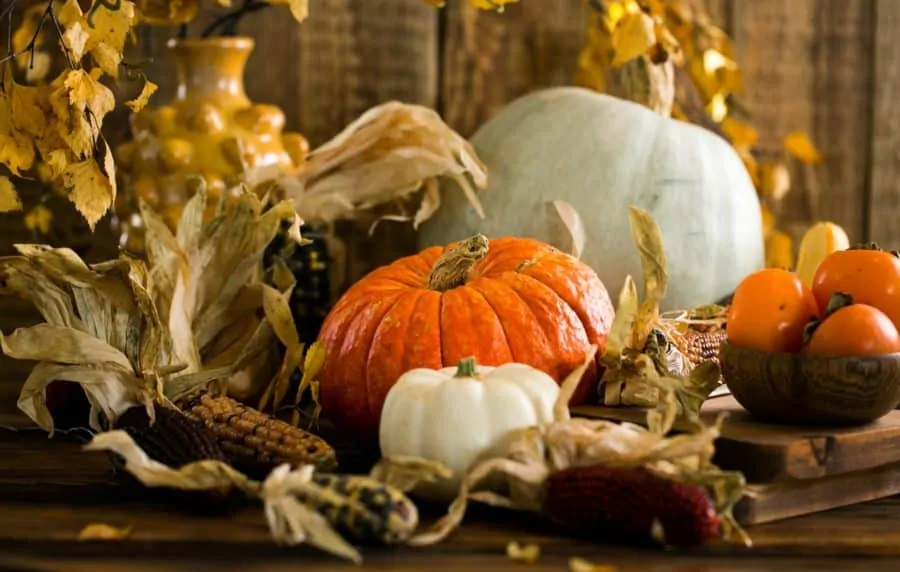
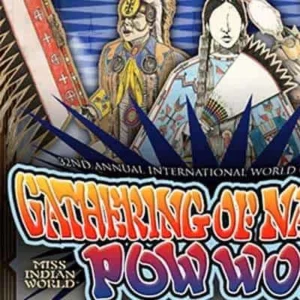
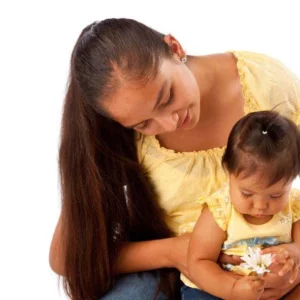
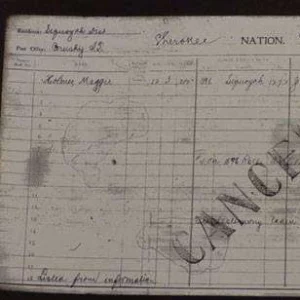
Aleric
says:https://lp.hillsdale.edu/thanksgiving-video/?utm_source=housefile&utm_medium=email&utm_campaign=thanksgiving_2019&utm_content=video&_hsenc=p2ANqtz-_8l_qFqk27U_G4X6EOXqFwS6ZM1oozu5jCyv4WnQU0nWRAImA32ugd7fLUQUPHVUkZi3bxwijhv2xiFzYFSElJQQiUAw&_hsmi=79948733
Dennis Hill
says:I do not celibate thanksgiving . I am of mixed race. I’m have native American on both my mother and father side. My mother instilled my native side more so than my father’s side. However I lean to my native culture and don’t participate with the so call thanksgiving holiday knowing my history. This is a white mans holiday and the native Americans time for morning.
Christy
says:Hi Dennis,
I have recently been blessed with my DNA via ancestry.com and talk about a huge confusion!!! I am blessed to find out that our parents were between 60-65% indigenous, Native Americans. I am at least 31% native which speaks to my love and passion for our native culture… yet quite naive growing up in San Diego, CA as Mexican mixed. Black, white, etc…
I just want to thank you for sharing your personal choice with us because after reading this published story, I will continue to learn more about this holiday and although I have already planned for my family to come over this year for a thankful dinner, I will be able to talk about my learnings of our people… Native Americans and the mourning of loss, slavery, robbery, slaughter, and so much pain and suffering. I am mixed as well, and I have a lot to discover and make choices,… some will require new sacrifices and change. Thank you.
Ellen B Wentzel
says:I was recently wondering if Indigenous People would celebrate Thanksgiving. I am not Indigenous but born and raised in Delaware of Irish and British descent. I always thought the Native American actually helped the pilgrims from starving and they all celebrated at one feast. I don’t remember ever wearing cut-out feather headpieces. Maybe it is just my remembering, but I thought it was the Native American welcoming the pilgrims and helping them and keeping them from starvation their first winter here.
DAVID TI
says:Per your article, you noted that Thanksgiving originally had nothing to do with the Native Americans and Pilgrim story. Do you have any information on how the celebration and the Feast got merged?
Just very curious.
John A. Goode
says:We were No more created to rule over our fellow humans than we were Created to live under water.
D
says:How true. The bible says man has dominated man to his injury. Soon our creator will step in to eradicate those ruining His earth and environment and to right all wrongs done toward humans and more importantly, to vindicate His name Jehovah and His right to rule .
BGR
says:I am interested in doing something alternative (to a thanksgiving dinner) on this day to celebrate gratitude, give thanks but also honor the Native Americans. Do any fellow readers have suggestions?